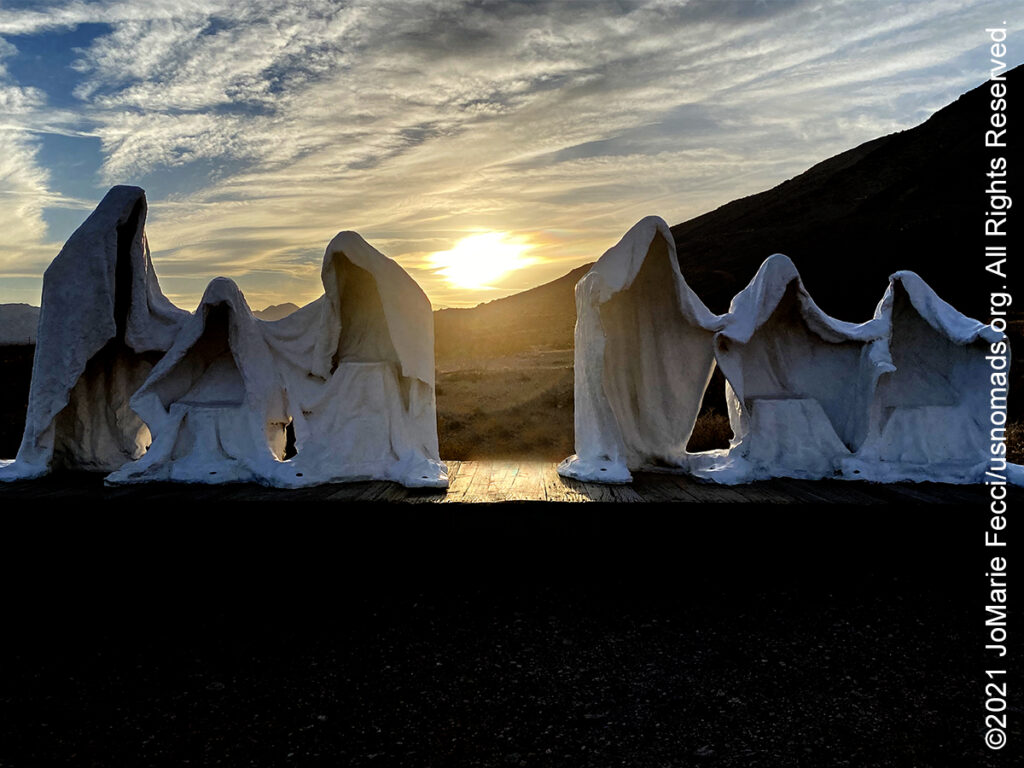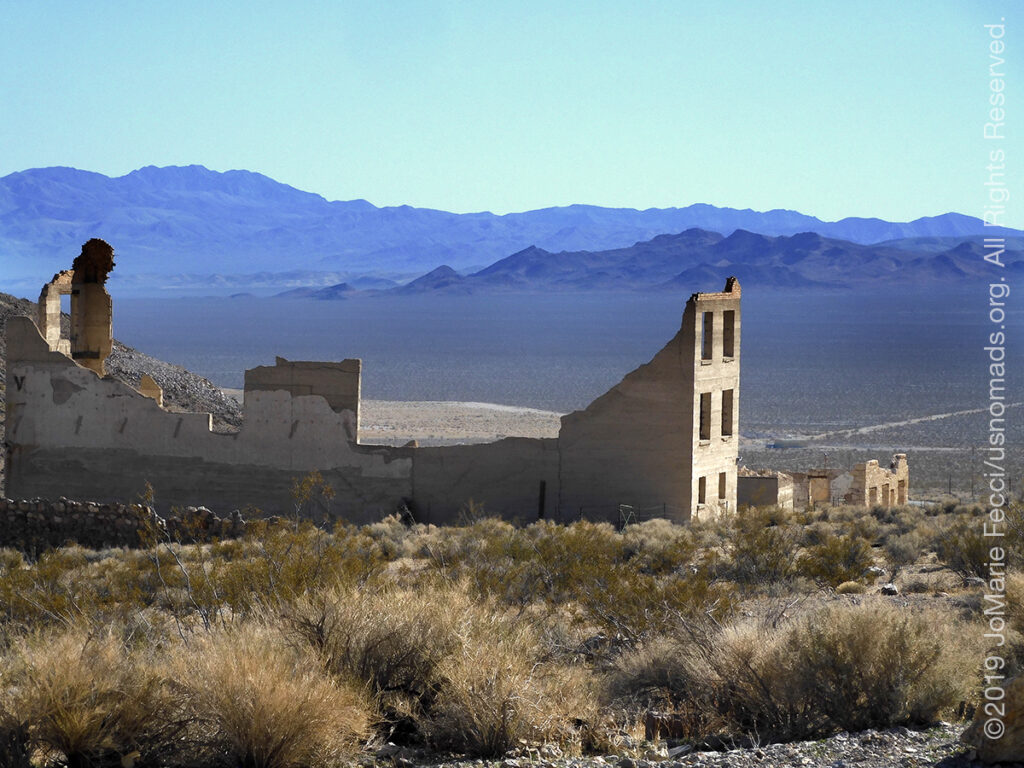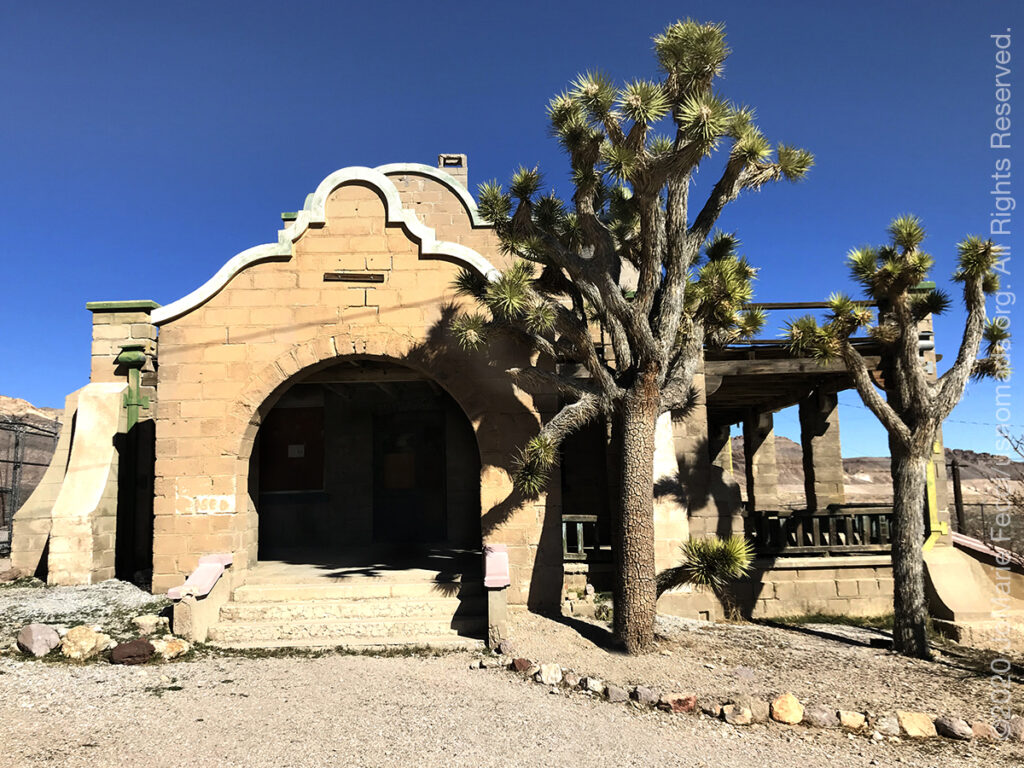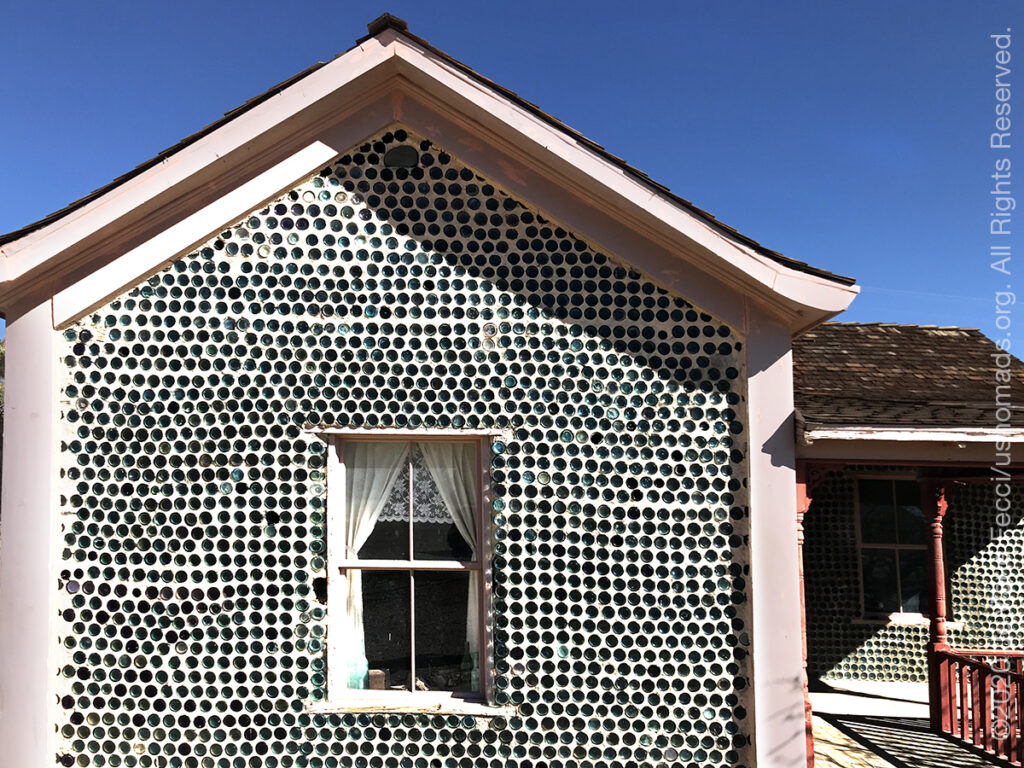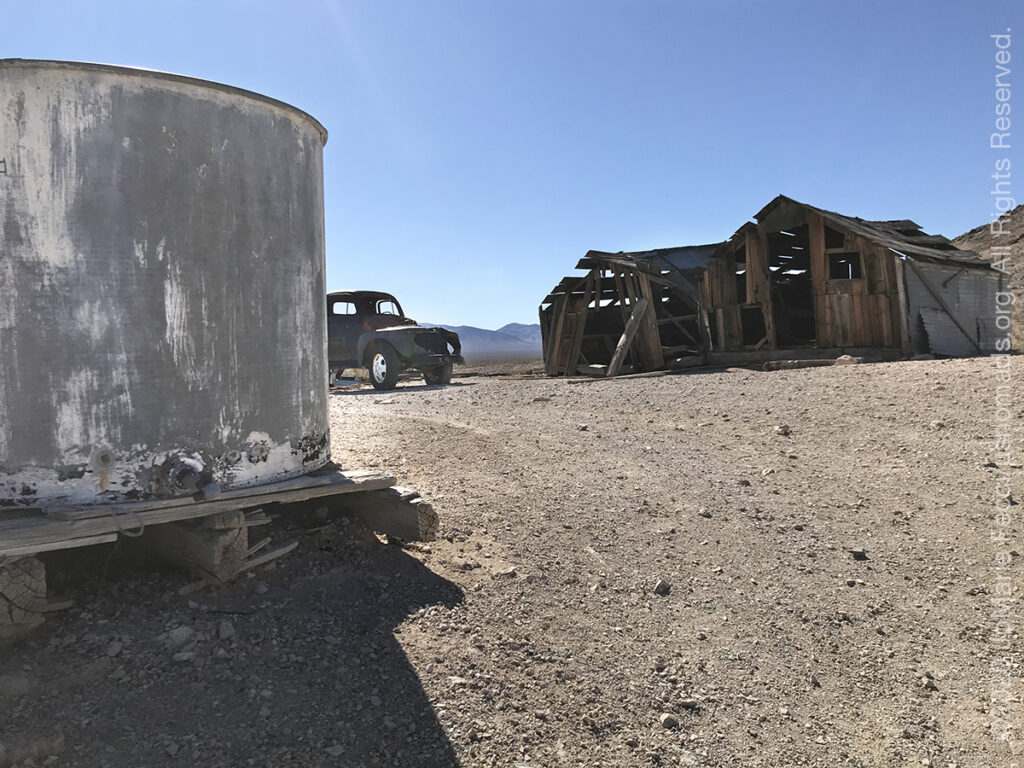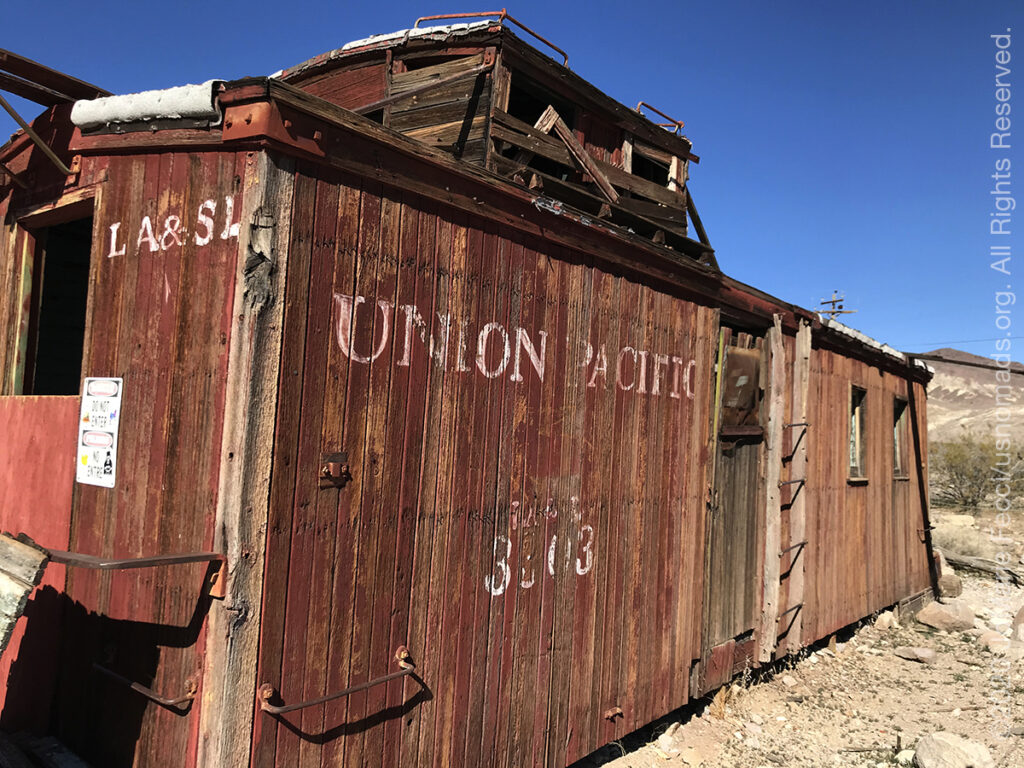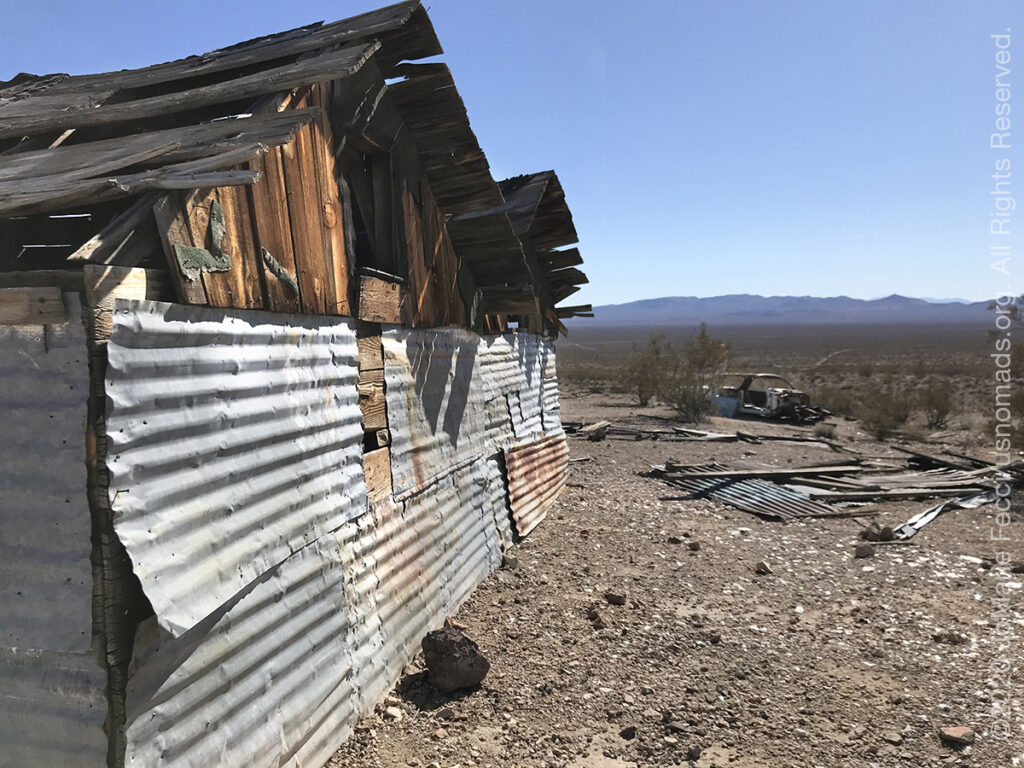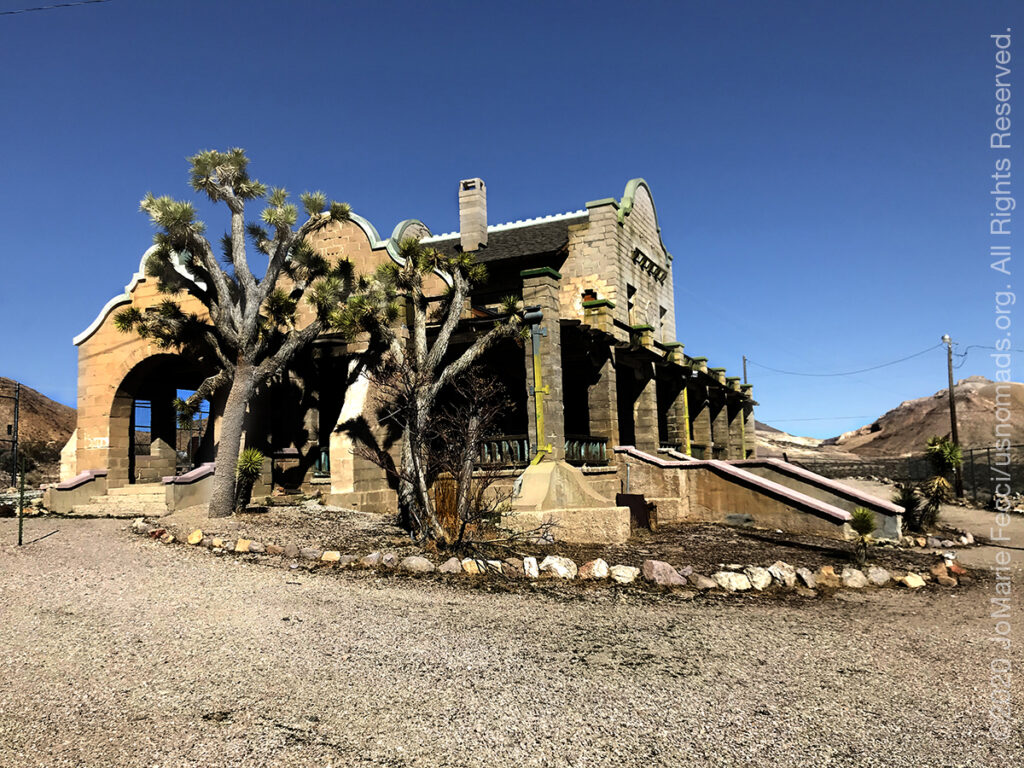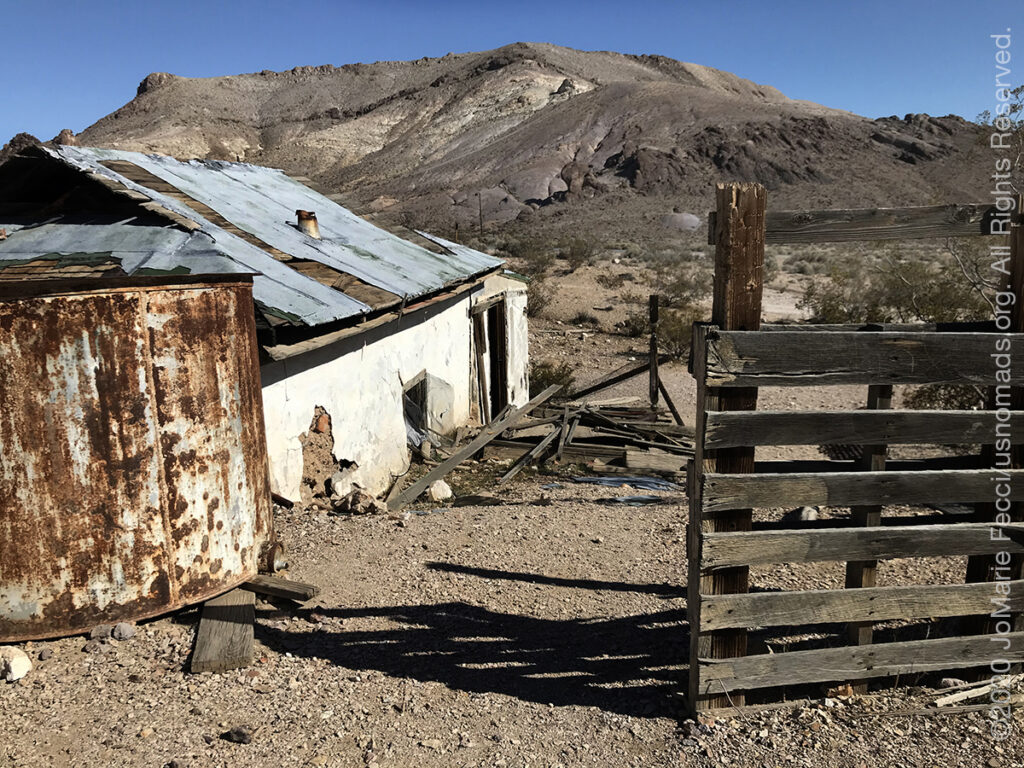The sun was low in the sky as I stopped to get a closer look at the ghosts on the horizon just outside Death Valley. The white draped figures seemed to rise up out of the scorched sand, reflecting the blistering sunlight, as if they were really spirits from the mining town of Rhyolite engaged with each other in heated debate. The sculpture by the late Belgian artist Albert Szukalski is actually supposed to represent Christ’s Last Supper, but because of its location it makes me think of the people who once animated this vibrant boomtown.
The artwork sits just south of the town site ruins, and is part of “The Goldwell Open Air Museum” which features a set of colossal outdoor sculptures created by Szukalski and a group of prominent Belgian artists. Wandering north from the ghosts, I pass a few old shacks and a rusted out truck on my way to the old “Main Street” where the broken silhouette of the Cook Bank facade dominates the skyline.
With three stories, it was the tallest building in town and had cost $90,000 to build. The bank had two vaults, Italian marble floors, mahogany woodwork, electric lights, running water, telephones and indoor plumbing. Today its skeletal remains testify to perhaps the most dramatic tale of boom and bust in the history of western mining towns.
Rhyolite got its start in early 1905 as one of several mining camps that sprang up in the wake of a gold discovery in Nevada’s Bullfrog Hills, near what is now the eastern boundary of Death Valley National Park. It was named after a type of silica-rich volcanic rock common in the area. The townsite was platted by a group of claim owners who decided they might do better promoting a town at the site of their claims rather than working mines on them. Rhyolite was laid out with 36 blocks, and lots were initially given away to miners to get the camp started.
As the gold rush intensified thousands of gold-seekers, developers, miners and service providers flocked to the Bullfrog Mining District, where there were over 2000 claims within a 30 mile radius. The largest producer was the Montgomery Shoshone mine, and as the Rhyolite townsite was well-placed in a sheltered desert basin nearby, people settled there. The Las Vegas and Tonopah Railroad started running trains to Rhyolite in 1906.

